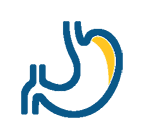Cystic formation with many free hairs inside. It is located deep in the hierococcygeal area of the spine. Its creation has nothing to do with the hairs that exist on our skin. It is due to free hairs that could never come to the surface of our skin and have no root. In the long run this cystic formation turns into an abscess from the entry of germs that are abundant in the specific area. It is usually seen in young people aged 16-30 years. It is more common in men and especially in people with intense hair growth. During the first crisis and before an abscess forms, it is treated conservatively with antibiotic coverage, painkillers and topical washes with antimicrobial shampoos. Otherwise, in case an abscess has formed, we proceed to open-drain the abscess under local anesthesia. We definitely proceed with the surgery after the second-third crisis, which show us that if the bladder is not removed, the patient will never get rid of his problem.
1. the method of removing the bladder which includes three methods the open, the semi-open and the closed and
2. the least invasive and newly applied laser method in which we destroy the walls of the bladder without performing any kind of removal whose results are very encouraging but we do not know its effectiveness in the long run due to the short time we apply it.
Coccygeal Cyst surgery is usually performed under local anesthesia or with sedation and local anesthesia. The patient is discharged within a few hours after surgery with any method he chooses.

















